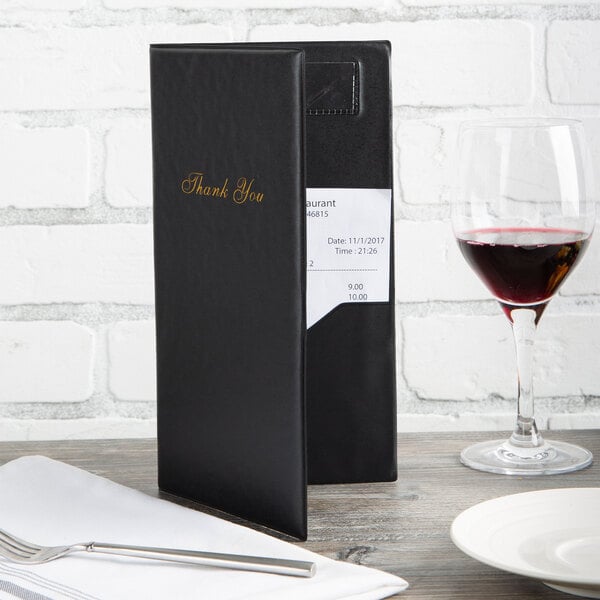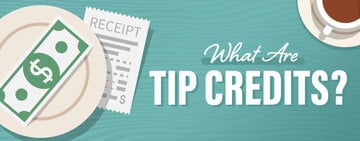Automatic Gratuity: What You Need to Know
Last updated on Jun 10, 2023Christine PottsGiving your server a tip is a cultural expectation of dining at a restaurant in the United States. Recently, more restaurants have added automatic gratuity charges to the final bill, which some customers find confusing. While the purpose of this charge ranges from simplifying checks for large parties to eliminating tipping, automatic gratuity plays a unique role in restaurant bookkeeping and employee payroll. Use this guide to auto gratuity to fully understand how it works, the laws surrounding the charge, and the pros and cons to decide if it's right for your restaurant.
What Is Automatic Gratuity?

Auto gratuity is a legal service charge added to a party's bill that goes directly to the waitstaff serving that table. Usually, this gratuity equals 18% of the check and is only applied to parties of six or more to ensure that servers receive ample compensation for their efforts. A restaurant will generally print this policy on its menu to alert patrons before they receive their bill.
Is Automatic Gratuity a Tip?
No, automatic gratuity is a service charge. This classification means the amount is predetermined and considered a fee, so the customer is legally obligated to pay it.
Why Do Restaurants Add Gratuity for Large Parties?
In the past, automatic gratuities often ensured adequate compensation for a server when handling a large party. A table of this size could want to split their bill, and as a result, confusion or miscalculation could arise and leave the server improperly tipped.
Is Automatic Gratuity Legal?

Yes, automatic gratuity is legal. Laws instated by the IRS rule that automatic gratuity is a service charge, and no legislation prohibits this practice. However, state laws may differ on if this charge is compulsory. In some states, restaurants must mention automatic gratuities on the menu or verbally inform customers about the fee before they receive it. To avoid confusion or conflict, clearly state your automatic gratuity policy on your menu or have your servers inform any affected parties at the beginning of their meal.
Can You Refuse to Pay Automatic Gratuity?
No. Customers cannot refuse to pay automatic gratuity since the payment is a service charge. Tips are optional and freely given by customers, but charges on the receipt from the restaurant itself are mandatory fees. Not paying the automatic gratuity is the same as not paying for the food.
However, a recommended or suggested tip is not the same as an auto gratuity. With suggested tips, the percentage is merely a guideline, not a requirement. The customer may choose what tip amount they want to give their server, if any. Restaurants should clearly label suggested tips and automatic gratuities on the bill.
Auto Gratuity Law

In 2012, the IRS stated that automatic gratuities would be classified as service charges beginning in January 2014. With this update from the IRS, automatic gratuities count toward employees' regular paychecks and are taxed differently than traditional tips. Employers must also report charges as a wage on payroll reports, not as tips.
If the restaurant institutes auto gratuity, the server's income must be at least equal to the state's minimum wage since they are not receiving any tips. Due to the differences in taxation and classification, traditional tips allow employers could pay employees less than minimum wage because of their supplemental tip income. However, with automatic gratuity counting as a service charge and not a tip, servers must receive the legal minimum wage of their area for their shifts worked with only auto gratuity on guests’ bills.
What Is the Difference between a Service Charge and a Tip?
A service charge differs from a tip in that a service charge is counted as a wage, whereas a tip is a separate source of income. The following guidelines determine if something qualifies as a tip.
- The customer gives it freely
- The customer determines the amount
- It is not affected by employer policy or negotiation
- The customer is free to choose who receives the payment
As a service charge, automatic gratuity is compulsory. Unlike a tip, automatic gratuity funds are considered restaurant funds and are not specifically designated as the property of the server by the customer. An employer may share part or none of the automatic gratuity funds with their employee.
Pros and Cons of Automatic Gratuity
Here are some pros and cons of implementing an automatic gratuity policy in your restaurant.
Pros of Automatic Gratuity

- Helps avoid confusion when large parties split bills
- Is a service charge designated as restaurant funds, so the restaurant owner can choose how to allocate the total
Cons of Automatic Gratuity
While automatic gratuity can help ensure adequate compensation after serving large parties, it can also bring about some challenges regarding your restaurant's bookkeeping. If you want to implement an auto gratuity policy in your establishment, familiarize yourself with the applicable legislation in your state. Remember that automatic gratuity funds are taxed differently than tipped income for servers, and print your policy on your menu or another prominent place to avoid confusion with customers.








